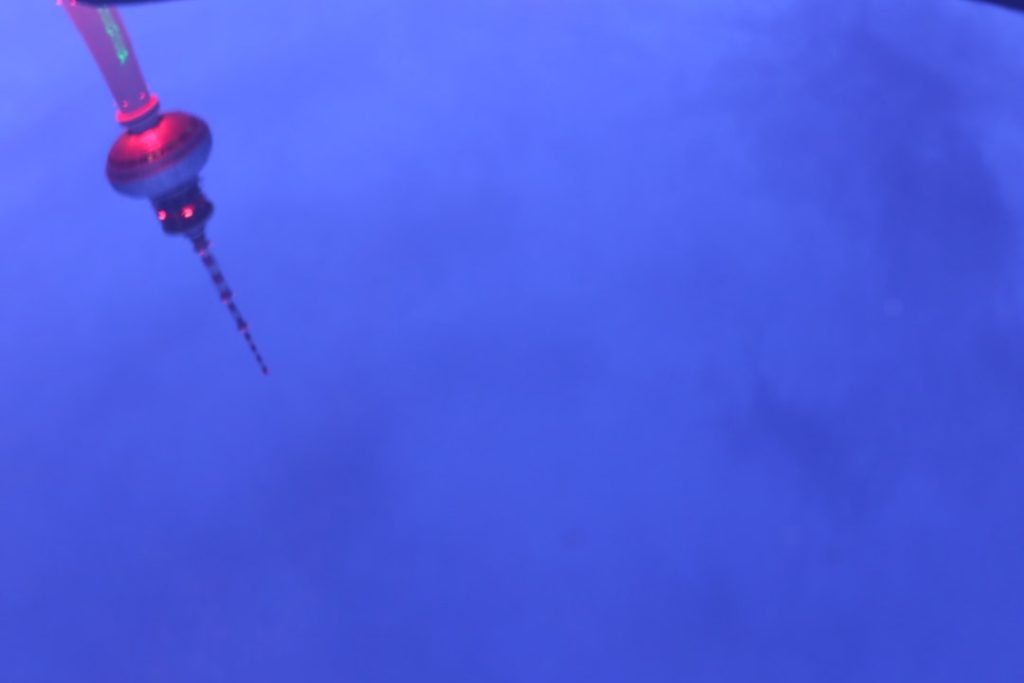The Douglas SBD Dauntless, commonly referred to as the Helldiver, stands as one of the most iconic dive bombers of World War
Designed and manufactured by the Douglas Aircraft Company, this aircraft played a pivotal role in naval aviation, particularly for the United States Navy and Marine Corps. The Helldiver was not just a tool of war; it represented a significant leap in aviation technology and tactics during a time when air superiority was becoming increasingly crucial in naval engagements. Its ability to deliver devastating payloads with precision made it a formidable asset in the Pacific Theater, where it contributed to several key victories against Japanese forces.
The Helldiver’s design was a response to the evolving needs of naval warfare. As aircraft carriers became central to naval strategy, the demand for effective dive bombers grew. The Helldiver was developed to meet these needs, combining speed, agility, and bomb-carrying capacity.
Its introduction marked a shift in how aerial combat was conducted, emphasizing the importance of coordinated attacks from the air. The aircraft’s legacy is not only defined by its combat capabilities but also by its influence on subsequent generations of military aircraft.
Key Takeaways
- The Helldiver was a carrier-based dive bomber used by the United States Navy during World War II.
- It was developed to replace the Douglas SBD Dauntless and was designed to carry a larger bomb load and have a higher top speed.
- The Helldiver had a mixed combat performance, with some issues in the early stages of its deployment, but later improvements made it a more effective aircraft.
- The Helldiver had a significant impact in World War II, participating in key battles such as the Battle of Midway and the Battle of the Philippine Sea.
- After the war, the Helldiver continued to serve in various roles and its legacy is still felt in aviation history today.
Development and Design of the Helldiver

The development of the Helldiver began in the late 1930s, as the United States Navy sought a replacement for the aging Douglas SBD Dauntless. The design process was marked by challenges, including the need for an aircraft that could withstand the rigors of carrier operations while also delivering effective bombing capabilities. The initial design was conceived by a team led by Ed Heinemann, who aimed to create a dive bomber that could outperform its predecessors in speed and payload capacity.
The Helldiver featured several innovative design elements that set it apart from other aircraft of its time. One of its most notable characteristics was its large wingspan, which allowed for greater lift and stability during dives. The aircraft was equipped with retractable landing gear and a distinctive inverted gull wing design, which not only enhanced its aerodynamic efficiency but also provided better visibility for pilots during bombing runs.
Additionally, the Helldiver was powered by a powerful Wright R-2600 Cyclone engine, enabling it to reach speeds of over 300 miles per hour. This combination of design features made the Helldiver a formidable presence in the skies.
Combat Performance of the Helldiver
| Metric | Value |
|---|---|
| Maximum Speed | 295 mph (475 km/h) |
| Range | 1,200 miles (1,900 km) |
| Service Ceiling | 25,000 ft (7,600 m) |
| Armament | 1 × 20 mm (0.79 in) cannon, 2 × 0.50 in (12.7 mm) machine guns, 2,000 lb (907 kg) of bombs |
The combat performance of the Helldiver was characterized by its effectiveness in delivering precision strikes against enemy targets. Its ability to dive at steep angles allowed pilots to accurately target ships and ground installations, making it a critical asset during naval battles. The aircraft was capable of carrying a variety of ordnance, including bombs and torpedoes, which further enhanced its versatility in combat scenarios.
One of the most significant operations involving the Helldiver was the Battle of Midway in June 1942. During this pivotal engagement, Helldivers played a crucial role in sinking four Japanese aircraft carriers, marking a turning point in the Pacific War. Pilots quickly learned to exploit the aircraft’s dive capabilities, often achieving direct hits on enemy vessels.
However, despite its strengths, the Helldiver faced challenges in combat, including issues with visibility during dives and difficulties in maneuverability compared to other fighter aircraft. These challenges were addressed through pilot training and modifications to the aircraft’s design over time.
Impact of the Helldiver in World War II
The impact of the Helldiver on World War II cannot be overstated. As one of the primary dive bombers used by U.S. forces, it contributed significantly to the success of numerous campaigns across the Pacific Theater.
Its ability to deliver devastating strikes against enemy ships and installations helped shift the balance of power in favor of Allied forces. The Helldiver’s effectiveness was particularly evident during major battles such as the Battle of Leyte Gulf and the Battle of Iwo Jima, where its bombing runs played a crucial role in weakening Japanese defenses. Moreover, the Helldiver’s introduction into service marked a transition in naval aviation tactics.
The aircraft’s design allowed for coordinated attacks involving multiple bombers, which increased the likelihood of successful strikes against heavily defended targets. This shift towards more strategic bombing operations laid the groundwork for future air warfare tactics and influenced post-war military aviation strategies. The lessons learned from the Helldiver’s performance would resonate through subsequent conflicts, shaping how air power was integrated into military operations.
Post-war Service and Legacy of the Helldiver

Following World War II, the Helldiver continued to serve in various capacities within the U.S. Navy and Marine Corps. Although it was eventually phased out in favor of newer jet-powered aircraft, its legacy endured through its contributions to military aviation history.
The Helldiver was utilized in various roles beyond its original design as a dive bomber, including reconnaissance and training missions. Its adaptability showcased the versatility of military aircraft during a time when aviation technology was rapidly evolving. In addition to its operational legacy, the Helldiver also left an indelible mark on aviation enthusiasts and historians alike.
Its unique design and combat history have made it a subject of interest for collectors and restorers. Several surviving examples can be found in museums and airshows across the United States, where they serve as reminders of an era when dive bombers played a critical role in shaping military outcomes. The Helldiver’s place in aviation history is secured not only by its performance but also by its influence on future aircraft designs and military strategies.
Notable Helldiver Squadrons and Pilots
Throughout its service life, several squadrons and pilots became synonymous with the Helldiver’s legacy. Notable among these was Bombing Squadron 17 (VB-17), which achieved fame for its successful bombing runs during key engagements in the Pacific Theater. Pilots from this squadron demonstrated exceptional skill and bravery, often flying perilous missions against heavily defended enemy positions.
Their experiences contributed to refining tactics that would be used by future generations of aviators. Another prominent figure associated with the Helldiver was Lieutenant Commander John M. “Jack” McCoy, who became known for his leadership and tactical acumen during combat missions.
His ability to coordinate attacks effectively and inspire his fellow pilots played a significant role in maximizing the Helldiver’s combat potential. The stories of these squadrons and pilots highlight not only individual heroism but also the collective effort that defined naval aviation during World War
Technical Specifications of the Helldiver
The Douglas SBD Dauntless, or Helldiver, boasted impressive technical specifications that underscored its capabilities as a dive bomber. The aircraft measured approximately 32 feet in length with a wingspan of 40 feet 10 inches, providing ample lift for its operational needs. It was powered by a Wright R-2600-8 Cyclone engine that produced around 1,700 horsepower, allowing it to reach maximum speeds of approximately 255 miles per hour at sea level.
In terms of armament, the Helldiver was equipped with a combination of bombs and machine guns that enhanced its combat effectiveness. It could carry up to 2,000 pounds of bombs or torpedoes under its wings and fuselage, making it capable of delivering significant payloads against enemy targets. Additionally, it featured defensive armament consisting of .50 caliber machine guns positioned at various points on the aircraft to protect against enemy fighters during missions.
These specifications contributed to making the Helldiver one of the most formidable dive bombers of its time.
The Helldiver’s Place in Aviation History
The Douglas SBD Dauntless, or Helldiver, occupies a distinguished place in aviation history due to its significant contributions during World War II and its lasting impact on military aviation strategies. As one of the most effective dive bombers of its era, it played a crucial role in numerous pivotal battles that shaped the outcome of the war in the Pacific Theater. Its innovative design features and combat performance set new standards for future military aircraft.
Beyond its operational achievements, the legacy of the Helldiver continues to resonate within aviation circles today. Its influence can be seen in modern military aircraft designs that prioritize versatility and effectiveness in combat scenarios. The stories of brave pilots and squadrons that flew this remarkable aircraft serve as enduring reminders of courage and innovation during one of history’s most challenging periods.
As such, the Helldiver remains an enduring symbol of naval aviation excellence and a testament to human ingenuity in warfare.


